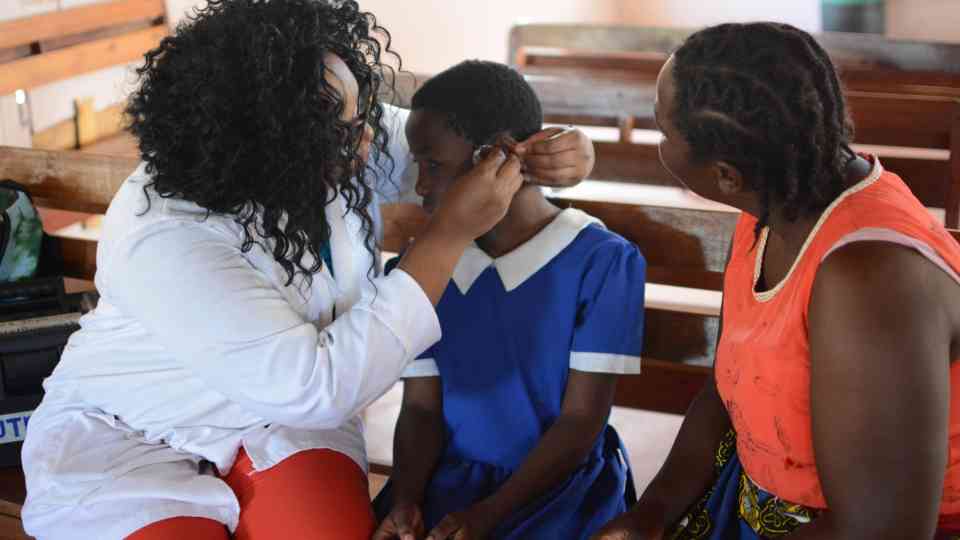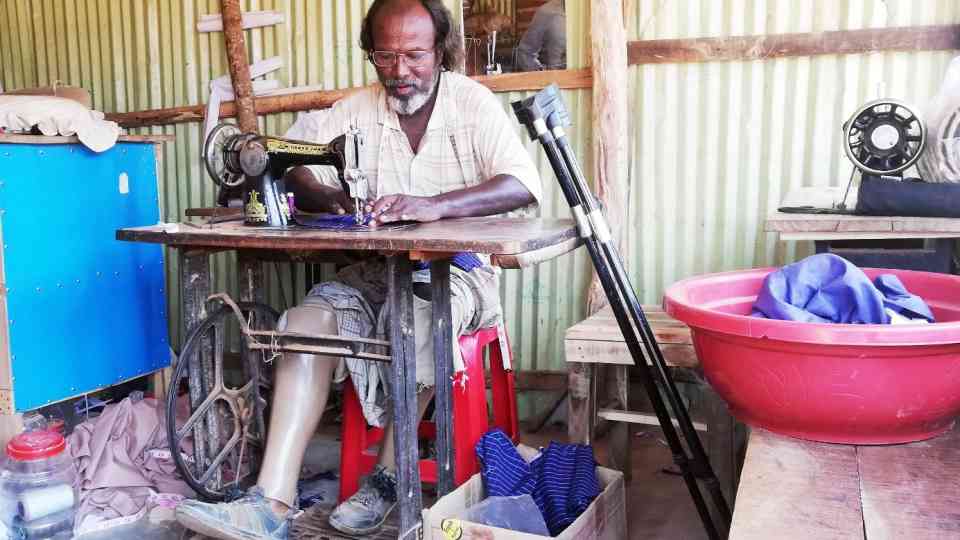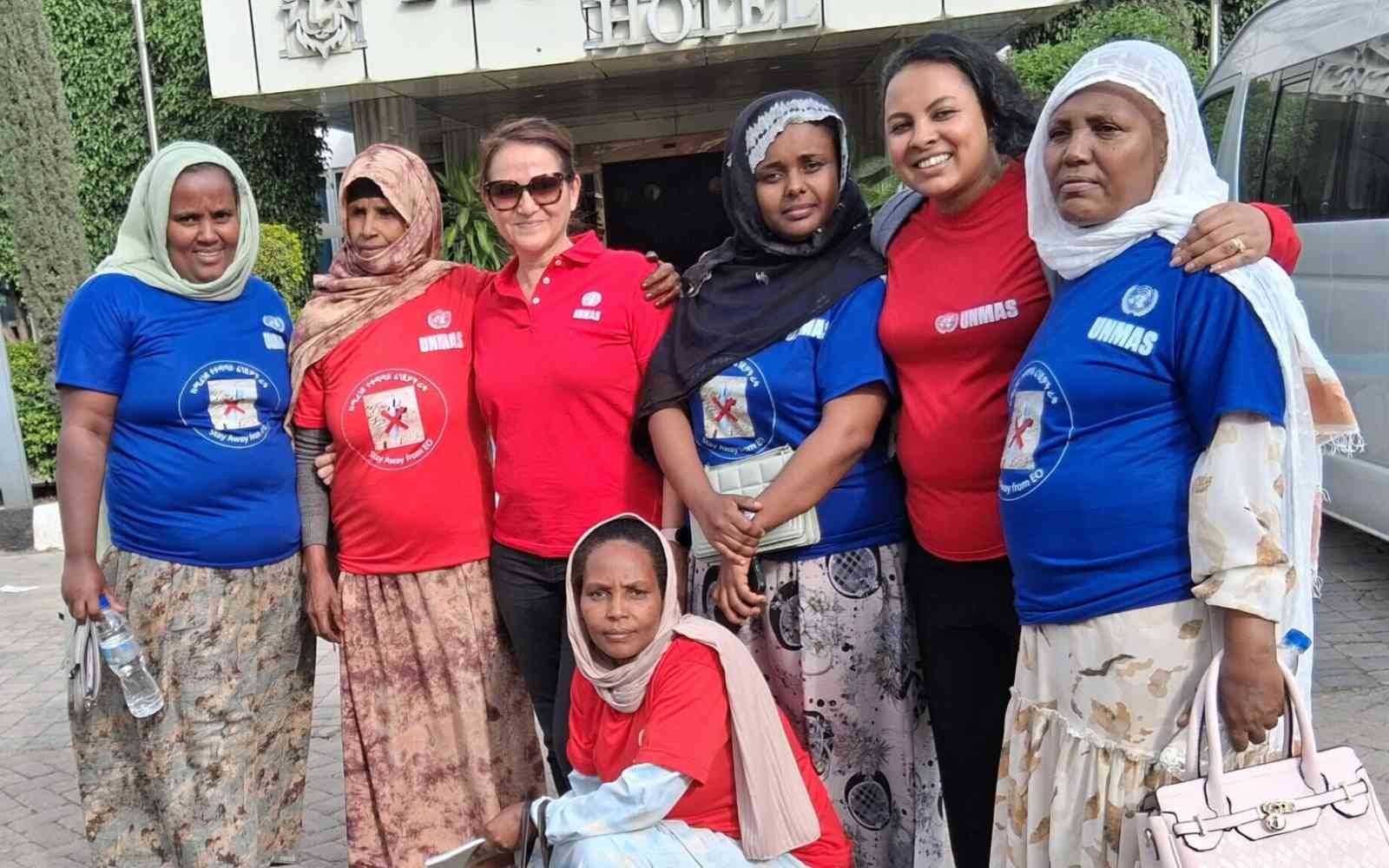The United Nations Office for Project Services (UNOPS)
Assistive technology deserves our urgent attention

How can we improve the quality of life for the 2.5 billion people who need assistive technology to live fuller lives?
Assistive technology helps people to see, hear, communicate, move around and more. It allows them to work, study, and simply to connect with other people. This makes assistive technology a powerful way to accelerate sustainable development, potentially making progress on all the Sustainable Development Goals (SDGs) and especially those covering poverty, health, education, gender equality, decent work, innovation and inequality.
A wheelchair, an artificial limb, a pair of eyeglasses or a hearing aid can make the difference between failure or success at school, between a job or unemployment, between a life of opportunity or a life of dependency. Timely access to appropriate, assistive technology can allow children to play and learn, adults to work and travel, and older people to join family and community life.
Disproportionate access
Assistive technology can be life-changing for people with disabilities, as well as for older people, people with injuries, and people with chronic conditions. Some 2.5 billion people currently will need at least one form of assistive technology, and by 2050 this figure will likely rise to 3.5 billion. Without it, more than 30 per cent of our global population would struggle to meet their most basic human needs.
But hundreds of millions of people do not have the assistive technology that they need. In high-income countries, 90 per cent of people have access to it, but in poorer countries, this figure falls to 10 per cent. And in some countries, it is accessible for just three per cent of the people who need it.
This inequality makes assistive technology an important social justice and development issue. By allowing this lack of access to continue, we are leaving people behind, often literally. Access to assistive technology is a human right. We must do more to ensure that all people have access to it when they need it – and that it is safe, effective and affordable.
Realizing the promise of the 2030 Agenda
The absence of assistive technology, especially in the world’s poorest regions, compounds existing social and economic inequalities. It is harder to escape from poverty, for example, when you cannot get to work.
When billions of people are prevented from fully participating in education, the labour market and civic life, it naturally impacts our overall progress towards the 2030 Agenda. Take school buildings. Education systems need to integrate assistive technology and accessible infrastructure to ensure true inclusion and the reduction of inequalities. Access to assistive technology for children in a low- or middle-income country can make a difference of $100,000 in their lifetime income, helping them overcome poverty.
Investing in assistive technology makes good economic sense.
Research from ATscale shows that for every dollar invested in the provision of assistive products a $9 return can be expected through improved educational outcomes among younger users, better-paid employment and higher productivity among adults, lower longer-term healthcare costs due to health complications and the reduction of challenges caused by ageing.
Assistive technology – an important component of primary health care – cannot be ignored if we hope to achieve universal health coverage. Ensuring that everyone, everywhere can access the health services they need without facing financial hardship is a key goal of the 2030 Agenda.
All people, including those affected by humanitarian emergencies, should have access to national systems for assistive technology – even more so, during the acute phase of emergency response. During armed conflict and other emergencies, assistive technology can prove to be life-saving, helping people to escape from dangerous situations and enabling them to access critical humanitarian services such as food, water, shelter, health care and protection.
Obstacles to progress
In order for people to be able to access assistive technology they need to know what’s available. In low- and middle-income countries, communities, health workers and teachers can be unaware of the existence of assistive technology or of opportunities to access it. It is important to work across multiple sectors, governments, service providers, non-governmental organizations and the private sector to engage with communities and provide information about access and availability at local levels.
In addition, very few countries in the world have national policies or programmes on assistive technology. Even in high-income countries, the availability of assistive technology can be limited or not included in health and welfare packages.
When we look at supply chains, assistive technology is often unavailable due to market failures. Markets for assistive products are complex and often function ineffectively or inefficiently. Limited, fragmented and uncertain demand, combined with limited quality suppliers and delays in regulatory approval, all contribute to the problem. This is compounded by the fact that global funding for disability-related issues stands at just 0.5 per cent of all development aid.
Consider wheelchairs. Globally more than 75 million people need an appropriate wheelchair, however, up to 95 per cent of those in need do not have access. Approximately 80 per cent of people who need a wheelchair live in low- and middle-income countries. The main global manufacturers do not focus on these countries, as there is limited public funding for the procurement and provision of wheelchairs in these countries. Instead, the approximately $4.5 billion global market for wheelchairs primarily focuses on high-income countries.
Not a one-size-fits-all solution
Assistive technology should be affordable, durable, safe and effective. The availability of training, services for repairs and regular maintenance of assistive technology can have a strong influence over whether someone uses an assistive product effectively.
In Nepal, seven-year-olds Nirmala and Khendo were severely injured – both lost a leg – when an earthquake struck the country in April 2015. With the support of a local NGO, the girls received prosthetics six months after the earthquake – with each of their prostheses adapted every six months as they grow, ensuring their continued mobility. This is a clear example of assistive technology working when it is customized to each person.
With 2.5 billion people in need and quickly growing, there can be no argument that we have our work cut out for us.
If we are to meet this global challenge head-on, it is imperative that decision-makers in governments, civil society, development agencies and the private sector take up the cause with vigour, creating the appropriate market conditions and the inclusive environment that will allow those with assistive technology needs to flourish.
We know what needs to be done. So let’s make access to assistive technology a reality for everyone who needs it.
Pascal Bijleveld
Pascal Bijleveld is the CEO of ATscale, the Global Partnership for Assistive Technology. He brings over 20 years of leadership experience in global public health, straddling the private and public sectors to drive systems transformation.
Before joining ATscale in 2021, Pascal served as the Director of Country Support at Gavi, the Vaccine Alliance, where he also directed COVID-19 vaccine delivery efforts under the COVAX Facility. His career spans senior roles with UNICEF, the Clinton Health Access Initiative (CHAI) across Africa, the World Health Organization, and McKinsey & Co.













